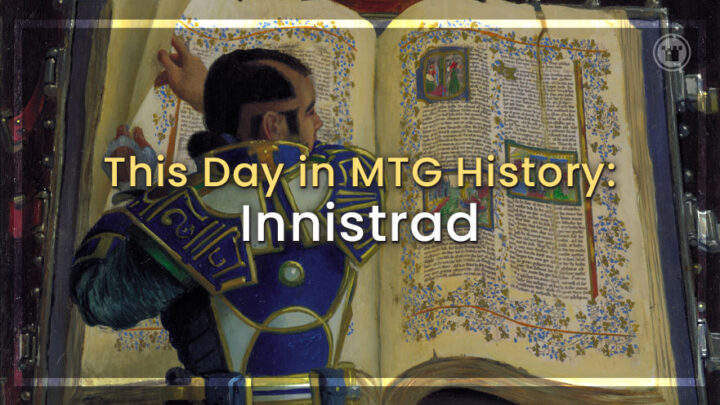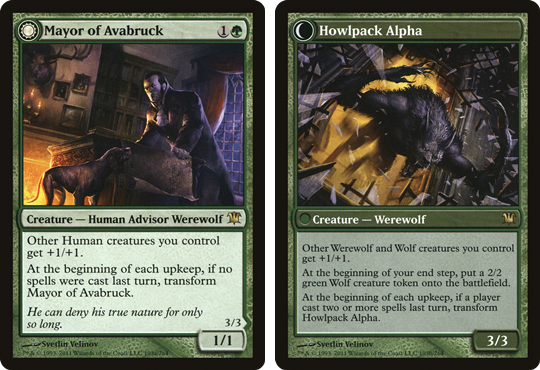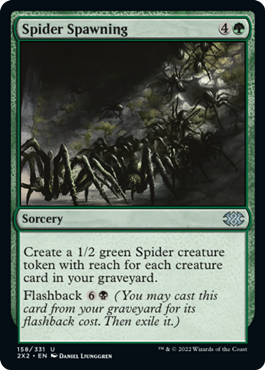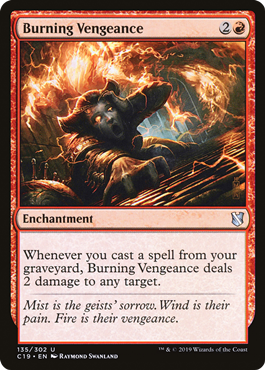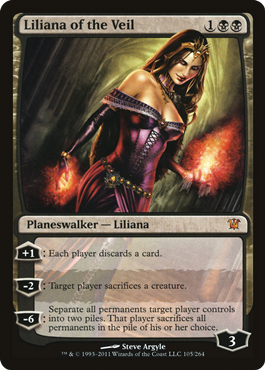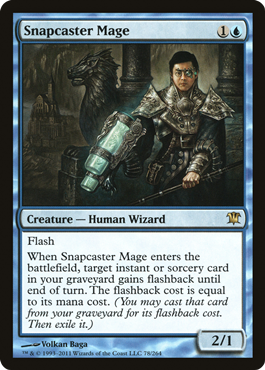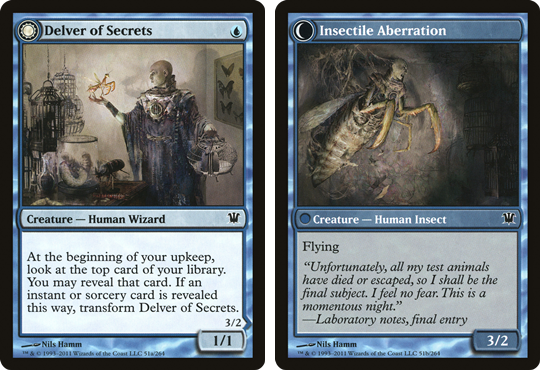Welcome to another edition of “This Day in Magic History.” Today, we’ll take a look at the release of Innistrad, which made its debut on Sept. 30, 2011. Spooky season officially kicks off tomorrow, so it seemed like a good time to take a look at the set that introduced us to Magic’s spookiest plane!
Innistrad is often considered one of the best sets in the history of Magic. It had something amazing for every kind of Magic player. It also featured a great Limited format, introduced several cards that have had a long-term impact on the game and gave the game a beloved setting. In this article, we’ll take a look at what made original Innistrad so great!
The Spooky Flavor of Innistrad
Innistrad was the second Magic Block to be designed with a top-down design philosophy. Kamigawa Block was the first, but its reception wasn’t so hot — so Innistrad marked the first time a top-down design was successful. Most sets have a bottom-up (mechanics first) design, where the design team settles on a mechanical theme, like “artifacts” or “multicolored,” while the actual design of the setting and the story are figured out later.
“Top-down” means the set was designed with a flavor first mentality. This means they designed the plane before they ever designed a card. Innistrad was a gothic horror-inspired plane whose human occupants are tormented by all the spooky creatures of our nightmares: werewolves, spirits, vampires, zombies and more!
After creating the setting, they molded the set’s mechanics and themes around that flavor, with cards mechanically referencing horror tropes. For example, the designers sat down and thought “How should werewolves be represented by the game’s mechanics?” and went about solving that problem.
They solve the problem with the introduction of double-faced cards. On the front side, the werewolves were in their human form. On the other side, you saw the bestial form they took during a full moon. Flipping the card over really gave you the feel of these creatures transforming.
Double-Faced Cards weren’t only used for werewolves, though! Wizards of the Coast found some other great ways to make use of the mechanic. Delver of Secrets is likely the most famous example.
On the front side, the Delver is someone who is conducting some research into insects. Eventually, though, he began experimenting on himself — and as a result he became an Insectile Aberration!
The success of Double-Faced cards in Innistrad has led to them returning in several other sets, and they always do an excellent job of showing the way something has changed over time.
More broadly, the success of Innistrad has led to many more sets that followed this type of real-world inspired, top-down design, including 2013’s Theros (Ancient Greece), 2017’s Amonkhet (Ancient Egypt) and last year’s Kaldheim (medieval Viking culture).
A Scary Good Limited Format
Triple Innistrad, meanwhile, is considered one of the greatest Limited formats of all time. Each allied color pair was focused on one of the creature types of Innistrad. You had green/white Humans, black/red Vampires, blue/black Zombies, red/green Werewolves and blue/white spirits. This really helped you feel the top-down design of the format, adding to the game’s level of engagement.
However, what people remember the most about Innistrad Limited is usually the format’s buildarounds. In Limited parlance, a “build around” is a powerful card that requires some serious work in your draft to actually make it work. A current example of this is Wingmantle Chaplain in Dominaria United. It is game breaking if you have a deck with lots of defenders, but not so good otherwise.
The two most notable build arounds from Innistrad were Spider Spawning and Burning Vengeance.
Spider Spawning wanted you to get a bunch of creatures into your graveyard. Once you did, Spider Spawning would give you a ton of Spider tokens. This usually meant you needed to be milling yourself, and the format was loaded up with good ways to do that.
The fact that Spider Spawning had Flashback made it extra good, because it meant you didn’t need to worry too much if it got milled, because you could still flash it back. Many a game of Innistrad Limited ended when one player put 12 1/2 spiders on the battlefield.
Burning Vengeance was also all about the graveyard — and the Flashback mechanic in particular. Every time you cast a spell from your graveyard, Burning Vengeance does 2 damage to any target. Cards with Flashback already generate card advantage for you, since you can cast them more than once, so tacking a Shock effect on top of that was incredibly powerful!
Important Constructed Cards
Innistrad also introduced three cards that are nothing short of iconic in competitive Magic: Liliana of the Veil, Snapcaster Mage and Delver of Secrets. All three have been played extensively in just about every Magic format during the past 11 years.
Liliana of the Veil is a three mana planeswalker that could absolutely take over games. If you could play her when your opponent only had a single creature in play, you could use her -2 to clear out their board and take over the game from there. Her +1 was symmetrical, but the decks using Liliana often had ways to turn discarding cards into an advantage. Eventually, she gets to her ultimate, which decimates your opponent’s board.
She has seen play in Standard, Modern, Legacy and Vintage. She is perhaps most famous for her run in Modern Jund decks, where you could cast Bloodbraid Elf and Cascade into her for an absolutely absurd turn! This was enough of a problem that Bloodbraid Elf caught a ban in Modern for several years to keep that from happening.
Liliana of the Veil is one of the best planeswalkers we have ever seen, making it all the more exciting that they reprinted her in Dominaria United.
Snapcaster Mage is a two-drop creature with Flash who lets you cast an instant or sorcery from your graveyard as if it had Flashback. This made the Mage a beloved card for control decks in many formats, as getting another use out of your counterspells and removal while adding a creature to the board is incredibly strong.
It was so strong that the Mage has been a fixture even in the Eternal formats since its original printing in Innistrad. Notably, this card was designed by pro player Tiago Chan and this original printing features his likeness.
Delver of Secrets has proven to be the most important card from Innistrad, which is especially impressive because it is a common! It starts out as an unassuming one mana 1/1, but if you reveal an Instant or Sorcery off of the top of your library at the beginning of your upkeep, it becomes a 3/2 flier.
Transforming the Delver is trivially easy for spell-heavy tempo decks in almost every single format where it is legal. In those decks, it is effectively a one mana 3/2 flier, one which you can back up with a bunch of counter magic and removal! Delver of Secrets is arguably the best one-drop creature and the best Blue creature in the entire history of Magic.
End Step
Original Innistrad was so popular that during the last 11 years, we’ve taken additional visits to the plane with 2016’s Shadows Over Innistrad Block and 2021’s Innistrad: Midnight Hunt and Innistrad: Crimson Vow.
While none of those sets have reached the same level of popularity as the original visit, most players are always happy to take a trip to Magic’s spookiest plane, and I think it is a safe bet that we’ll be returning in the future.

Jacob has been playing Magic for the better part of 24 years, and he especially loves playing Magic’s Limited formats. He also holds a PhD in history from the University of Oklahoma. In 2015, he started his YouTube channel, “Nizzahon Magic,” where he combines his interests with many videos covering Magic’s competitive history. When he’s not playing Magic or making Magic content, he can be found teaching college-level history courses or caring for a menagerie of pets with his wife.

